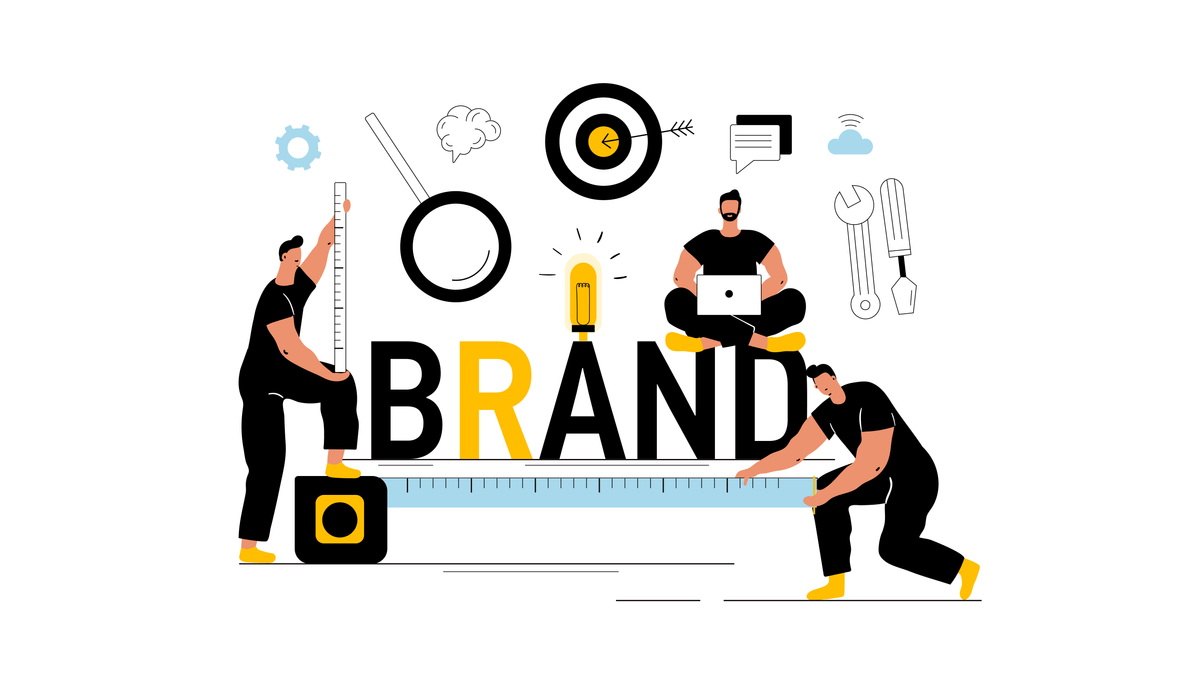The art of branding creates instant recognition. To put it simply in a short-handed statement, Branding is your business personified. After intensive planning, strategizing, and implementing, all but creatively, your brand can be communicated to the world in more ways than one and more than once. Once your brand makes sense, logically, emotionally, and psychologically to your consumers, the world will start connecting with it and your audience will start empathizing with your brand, setting the foundation for your brand to begin communicating with the external world.
Why create a brand identity?
Wrestle with the WWH, i.e., what, why, and how of the brand to paint a complete picture of its essence. Before introducing your brand, you must decipher the organization’s values, aspirations, vision, story, etc.
- Brand identity creates a visual system that allows your brand to own a distinctive space in your consumers’ minds.
- Branding distinguishes the brand from its competitors and communicates to consumers and potential employees the values that the company is associated with.
- A company’s humanization helps it form relationships with its customers, which in turn builds loyalty. How your brand presents itself decides how it will be perceived.
- Going the extra mile is crucial as new businesses flourish around each corner, every hour. With the booming era of social media, consumers face exposure to plenty of options making brand visibility and recollection crucial so that your brand does not get lost in the crowd. It is therefore to build distinctiveness through branding & brand communication
- An established and credible reputation serves the company well, as it is valued internally by employees and externally by consumers or patrons. This reputation can also be enhanced by branding strategy
- Branding enhances the value of a brand far more than the physical cost of its products and services.
- Making a brand promise means making a commitment to your customers about the experience they will receive each time they interact with your brand.
What does branding comprise of?
There is a structured process to branding that starts with deciding the relevant strategy and branding agencies play a major role in that. To position the brand in the right way, one needs to understand the branding process in a detailed manner. The branding process takes a lot of research, planning, creativity and insight. To outline the branding steps, we can divide the phases into the following parts:
- BRAND STRATEGY:
To chart out a strategy, you need to clearly understand your brand, its objectives, and its goals. It is also important to understand the external environment – the category and competition. After understanding who your brand represents and what it truly is, you need to clearly identify who your audience is.
The Target Audience or Target group (TG) are the people your brand extends its products and services to. Proper market research is crucial to understanding your audience and competitors. You can do this by creating a buyer persona that will serve as your fictional TG to assess the market scenario.
- BRAND POSITIONING:
An extremely crucial step is planning how to position the brand in the market and carve a niche. It is essentially answering the questions – Who are we to whom? And what promise do we offer them?
Brand Reputation- This is the perception that the world has about your brand. Building a credible reputation is always a top priority. This takes time and consistent efforts in terms of communication.
Draft a Positioning Statement- A compact and carefully phrased expression of your brand, lay the foundation for your firm’s messaging. It is helpful as you can return to it to write future content as well.
- BRANDING TOOLS
Many substantial and recognizable elements work together to give you a distinguished ‘Brand Image’ (a perceptual picture or an impression of the brand). This brand image is what makes great brands, even greater. From crafting the verbal and visual features to overall personality, it is important to also create a brand name, colour palette, typography, voice, logo mark etc. in order to stay distinctive. This coupled with testimonials, branded blog articles, and all other forms of content can help your brand thrive.
A great tool to keep the brand personality intact and keep it consistent are your ‘Brand Guidelines i.e., A constitution for your brand, making sure nothing related to it is going amiss while leaving room for variety and exploration. Additional helpful tools to keep an eye on could be Brand Calendars, Brand Maps, Voice Style guidelines, etc.
- BRAND LAUNCH:
The final stage is implementation. After everything is thought out and your brand is ready, it is the time to introduce it to the world, officially. Now you plan the roll-out, the elements and decide on how and when to launch it. Here, the communication strategy for your launch is also important. The brand launch can happen in many forms, from mainline campaigns to social media to announcements on websites, from business cards to product photoshoots and videos, from gala parties to inauguration ceremonies, etc.
In essence branding is a complex, yet simple approach to developing a brand. From studying the internal environment and objectives to understanding external factors such as your category and competition, branding can help you create a distinctive and memorable brand. However, in order to become successful, consistent efforts in terms of brand management, marketing and communication must be made. In fact, these systems need to work towards a common goal, which is to ensure that your brand stays distinctive, is familiar with your audience and is also ahead of the competition.



